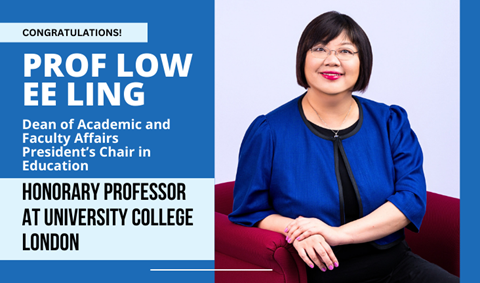Is It Worth Pursuing A Career As A Creative?
In May, the Writers Guild of America (WGA) embarked on a strike to demand better pay and working conditions for its members, made up of writers and actors. Among their central demands and concerns: increasing the number of writers staffed to shows, tightening regulations on the use of artificial intelligence (AI) on creative projects, and higher compensation and increased job security – particularly since streaming services have exploded and the only ones who seem to be reaping the profits are the shows’ producers and network CEOs.
Months later, the strike is still ongoing and there doesn’t seem to be an end in sight. With more than 150,000 WGA members having walked off the job, many hit TV shows, like Stranger Things, Euphoria and Saturday Night Live, have paused production.
Such strikes aren’t new, with the creative field long been seen as a breeding ground for exploitation. Writers, actors, artists, and other creatives are more likely than other professions to be unfairly compensated for their work. According to employment website Indeed.com, the average monthly salary for writers in Singapore is $3,184, and for actors, $3,589. Compare that to lawyers and data scientists, whose average monthly salaries are $7,924 and $7,527, respectively.
Creatives tend to be exploited in other ways, too. For instance, songwriters for movies or shows on streaming platforms may not be given the copyrights to their music, effectively denying them from receiving any future royalties. Creatives like illustrators, writers, musicians and photographers are sometimes even asked to contribute their ideas and labour for free, for “exposure”.
Art-related degrees also aren’t as highly valued as, say, medical, engineering or finance degrees. In fact, they’re typically regarded as “worthless”, with arts graduates often mocked for only being qualified to flip burgers at fast-food restaurants – a stereotype that’s prevalent in the US. In Singapore, the gross median salary for new university graduates is now $4,200, but for those in the arts, entertainment and recreation industries, it is just $3,500 (higher only than the salaries of new grads in the biomedical industry).
And now, with the growing pervasiveness of AI and the threat of the technology to the arts and media industries, we have to ask: Do creatives get the short end of the stick?
It’s time to recognise how creative work benefits society
Until we discuss how creative industries benefit our society and enrich people’s lives, many people will continue to view creative jobs as unimportant, says Kimberly Shen, Programme Leader (Fine Art), School of Fine Art, Faculty of Art & Design, NAFA (Nanyang Academy of Fine Arts).
“In Singapore there’s a tendency to want to equate one’s labour to something concrete and tangible, but the work of creatives isn’t always immediately visible because it’s process-based. In fine art, particularly, there’s no defined job scope but we’re creating things that go above and beyond simply making the world a more beautiful place. Until society recognises this, there will always be this perception of the creative field as being non-essential.”
Without this recognition, arts-related degrees will continue to be seen as worthless, too.
Sure, some arts graduates do find their way to flipping burgers in fast-food restaurants, but there can be many reasons for this, so it’s not fair to pinpoint their arts degree as a cause, says Paul Lincoln, Head, Visual and Performing Arts Academic Group, National Institute of Education, Nanyang Technological University Singapore (NTU).
On the other hand, many arts graduates do find themselves in jobs related to their original field of interest, but Paul adds that the challenge of succeeding as a “rockstar” in the creative world – at least from a Fine Art perspective – is that the vocation is inherently a business that requires strong entrepreneurial skills.
“Some of the most successful artists of our time – Andy Warhol, Jeff Koons and even Michelangelo – had to employ a strong business acumen to succeed in their field,” Paul notes. Locally, contemporary street artist Jahan Loh has found success commercially too, having collaborated with brands like G-Shock and tech accessories label Hex to create limited edition products.
Kimberly advises against comparing the value of an arts-related education to that of others. The starting pay for an arts graduate may not be high compared to the starting pay of finance or engineering grads, for instance, but that doesn’t mean the degree has no value.
“Speaking as an arts educator, I will say that arts graduates know how to think more critically. They have big imaginations and are curious about the world around them. They can see different possibilities and often have creative solutions to difficult problems. All these skills are essential to any job in any industry.”
Over the years, Paul has personally noticed the growing number of parents who are keen to give their children an education in the arts; these families hail from all socio-economic backgrounds. In 2017, The Straits Times reported that School of the Arts (SOTA) Singapore had accepted students from 49 per cent of the 190 primary schools in Singapore then, an increase from 41 per cent of primary schools in 2015. SOTA’s goal: To take in students from a wider mix of neighbourhoods, not just the more affluent ones.
And more recently in 2021, the National University of Singapore (NUS) brought together two of its faculties – the faculty of Arts and Social Sciences and the Faculty of Science – to launch a new interdisciplinary college, the College of Humanities and Sciences (CHS). Professor Sun Yeneng, CHS Co-Dean and Dean of the Faculty of Science, states that CHS aims to combine academic passions with disciplines sought after by employers.
There is more evidence that we are taking the creative industry more seriously: In August 2024, we will see the opening of the University of the Arts Singapore (UAS), the country’s first arts university which will be formed by an alliance between Lasalle College of the Arts and NAFA.
According to a Ministry of Education spokesperson, “Singapore’s future economy will need talent not only from the science, technology, engineering and mathematics disciplines, but also from the arts and humanities, and that is where UAS will come in to nurture them.
“They will not only work in the arts sector but will also flow into many other parts of the economy including healthcare, banking, finance and the public sector.”
Creative job security in the age of AI
AI has its advantages, but the technology is also said to have the potential to disrupt creative work, putting the livelihoods of writers, musicians, photographers, actors, designers, and so on, at risk. We couldn’t have imagined it a few years ago, but AI tools can now be utilised to write articles and generate artwork, from paintings and poetry to music.
While no-one can escape the growing pervasiveness of the technology in just about every industry, creatives shouldn’t feel threatened by it, says Kimberly.
“When humans create something, we can see that it has a ‘soul’, but we can’t say the same for AI-generated creative works. While the technology is pervasive, I wouldn’t exactly call it a threat; it just pushes us to rethink the way we look at art. We should try to adapt to it.”
Paul believes that creatives ought to embrace AI. “When French painter Paul Delarouche saw an early photograph in the 1840s, he declared, ‘From today, painting is dead’. And yet, 180 or so years later, nothing could be further from the truth, with painting living alongside other art forms such as photography and digital art, which threatened the status quo in the ’60s. Now, we have a new kid on the block: image generators.
“Ultimately, all these domains are enabled by technological tools. For instance, photography uses a technology that combines physics and chemistry. Every step in the evolution of the Arts has been enabled in some form or manner by technological advancement.
“Are the livelihoods of creatives threatened by this AI ‘invasion’? Yes – think about the many arts vocations that have already been side-lined by technology, like typesetting and papyrus paper making, for example – but the creative community must evolve with the times.”
How creatives can protect their livelihoods
Not everyone in the creative field has the luxury of a stable income, and those who have regular work may not be as well compensated as their peers who work in other, non-creative fields.
So, what can they do to ensure that they’re paid what they deserve? Start by putting your skills to good use. “Think about how you can leverage your knowledge to make a difference in other areas,” advises Yeo Chuen Chuen, Managing Director of ACESENCE Agile Leadership and author of 8 Paradoxes of Leadership Agility. “Communication plays a huge part in getting paid what you deserve. Some questions to think about: ‘How can I bring value to the table?’ and ‘How do I articulate my value so that others see my relevance?”
She also suggests learning to work with AI instead of rejecting or being afraid of it. “Focus on honing those skills that AI does not have, like critical thinking, empathy, working with bias, leadership, and originality.
“One area that creatives can immediately work on is reducing the unconscious bias currently present in AI-generated outputs. These professionals can also be ethical advocates by curating, modifying, and correcting AI-outputs for the betterment of society.
“Learning how to work with the technology will increase your ability to create excellent, high-quality work at scale. The people who won’t be replaced are those who learn to work with AI.”
Don’t discount commercial work, either. Paul believes that it can be lucrative, as you can further hone your craft and it’s an excellent way to widen your professional network.
If you are self-employed or a freelancer, you have to protect your interests by learning how to ask or negotiate for fair compensation.
You may also wish to look for ways to sustain yourself beyond your actual job scope, Kimberly suggests. For example, can you teach or conduct workshops? Can you apply your creative skills to a different industry? Don’t limit yourself to just one job or field.
“I believe that creative talents are well-positioned for today’s world,” Chuen Chuen adds. “Being able to connect with the human soul through creative expression is a wonderful gift. In the fast-paced and chaotic world we live in today, creative professionals can provide a gateway for healing the human spirit.”
Read the original article here.
Source: HerWorld © SPH Media Limited. Permission required for reproduction.




.tmb-listing.jpg?Culture=en&sfvrsn=1a71f9dd_1)


